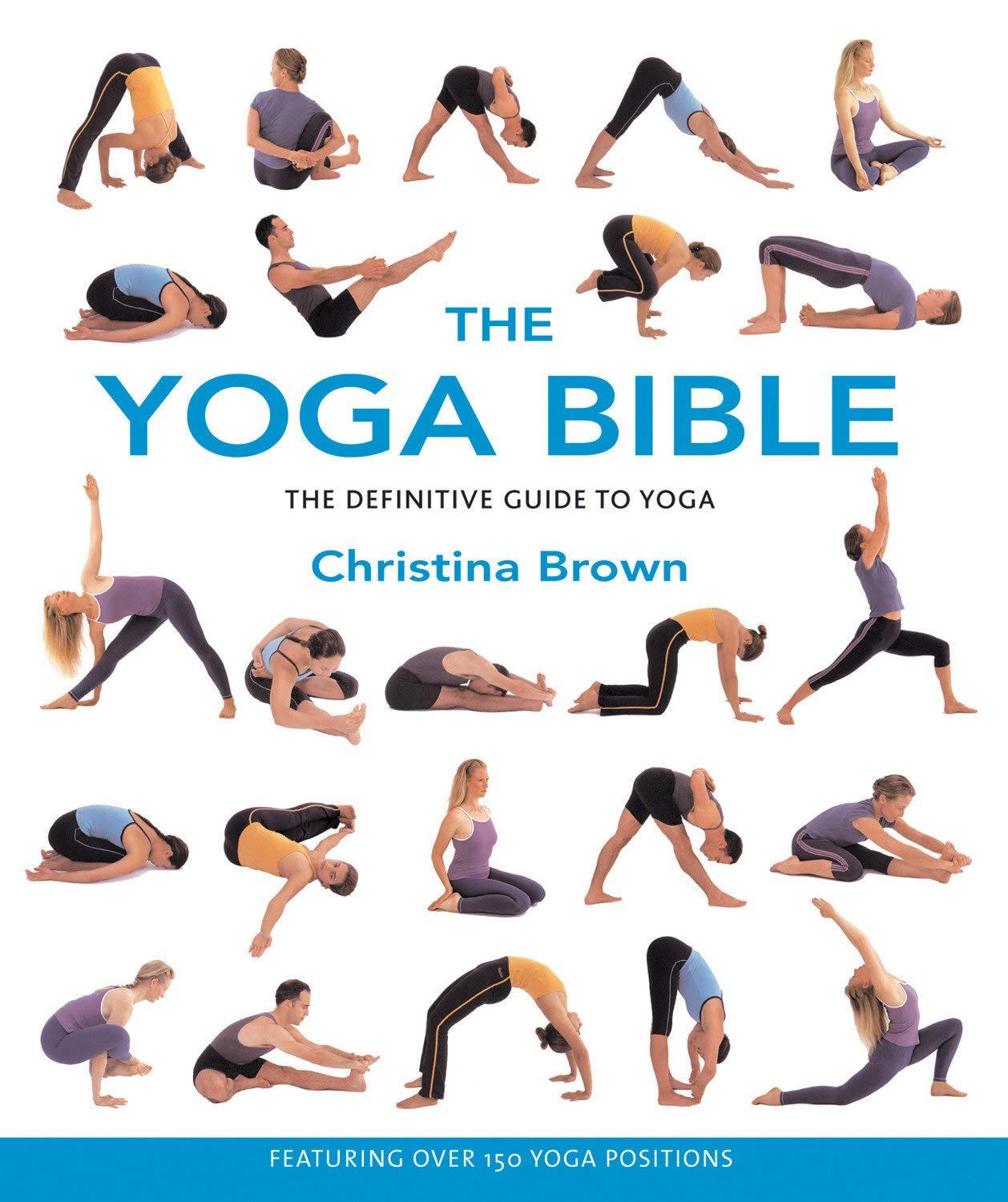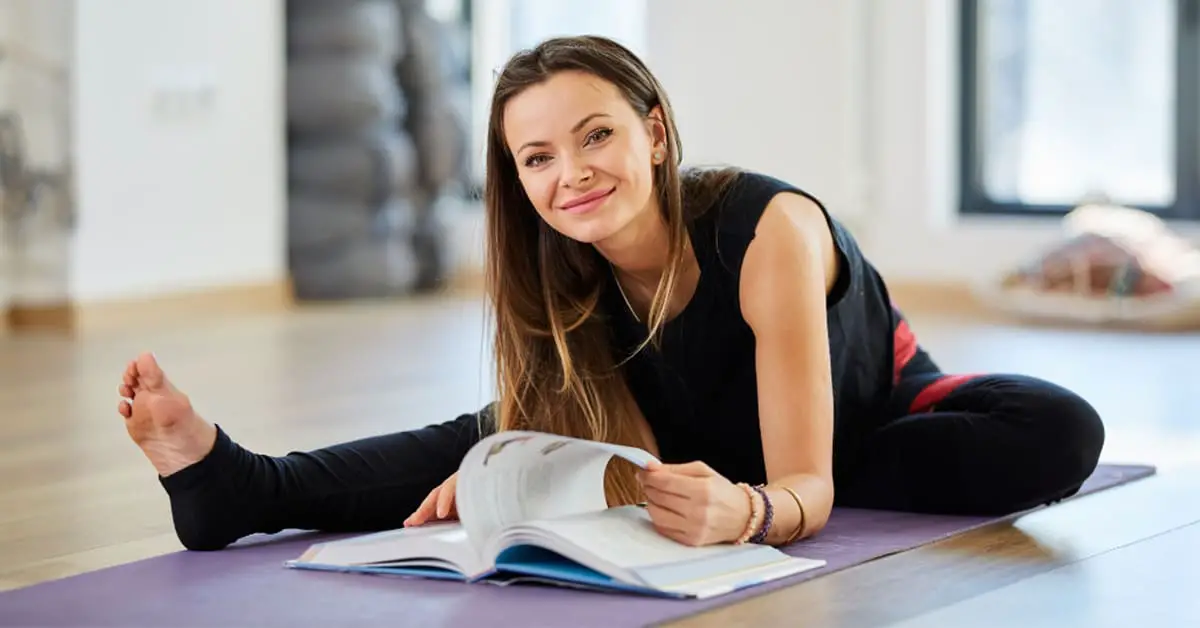Best Yoga Books Of 2023: Top Reads for Mastery and Mindfulness
Yoga is a practice with origins that date back thousands of years, deeply embedded in ancient traditions. Today, it remains a popular form of exercise and relaxation, offering benefits for both the mind and the body. With its increase in popularity, a plethora of books has emerged, covering everything from the basics of posture and alignment to the philosophies and histories intertwining with yoga’s spiritual aspects. These books serve as invaluable resources for both beginners wanting to start their journey and seasoned practitioners looking to deepen their practice.
Selecting the right yoga book is essential, as the right text can guide one’s practice and understanding to new heights. Critical factors to consider include the book’s focus – be it asana (pose) guidance, breathwork, meditative aspects, or philosophical teachings – and its alignment with the reader’s level of experience and interests. The credibility of the author also plays a significant role, as knowledgeable and experienced teachers can offer deeper insights and more refined instructions.
For our evaluation, we took into account various styles of yoga and levels of complexity to ensure a comprehensive resource list. We sought to find books that were not only informative and accessible but also inspiring and practical for incorporating yoga into daily life. Through rigorous research and comparison, we’ve determined a selection of books that stand out for their clarity, authority, and ability to convey profound lessons in an approachable manner. Our goal is to help you find the book that resonates with your path in yoga and enriches your practice both on and off the mat.
Top Yoga Books for Your Practice
We’ve scoured the literary world to bring you a curated selection of the top yoga books available. Each title is handpicked for its ability to provide valuable insights into yoga, from the underlying philosophy to the practical aspects of various poses and sequences. Whether you’re a beginner or an advanced practitioner, our recommended reads are sure to deepen your understanding and enhance your practice.
The Science of Yoga

We find this book enlightening for anyone eager to deepen their understanding of yoga’s anatomical mechanics and health benefits.
Pros
- Extensive anatomical details enhance the yoga practice.
- High-quality diagrams aid in visual learning.
- Useful for both beginners and experienced practitioners.
Cons
- The typeface may be challenging for some readers.
- Some may desire more varied postures.
- More in-depth explanations would be beneficial.
Exploring the intricate connection between yoga poses and anatomy, this book often comes off the shelf in our practice sessions. With its clearly illustrated diagrams, we gain a deeper understanding of how our bodies move and stretch in each pose. It’s specifically beneficial when we’re looking to refine our technique and ensure we’re practicing safely.
What strikes us most are the visual aids, which mesh perfectly with the detailed write-ups. As we turn the pages, we witness the activation of specific muscle groups, which is exceptionally handy for curating a targeted yoga routine. Its approachable language and design encourage a wide range of readers, from novices to seasoned yogis, to delve deeper into their practice.
However, while the book is generally applauded for its depth, we sometimes feel it leaves us wanting a bit more. A variation in the complexity of poses covered could cater to a broader audience. A few among us with visual impairments also note that the small and light typeface can strain the eyes. Regardless, it remains a favored companion in our yoga journey, consistently enriching our practice with each use.
Yoga Poses Handbook

We find this handbook essential for anyone looking to explore the benefits of yoga, with its clear instructions and detailed pose explanations.
Pros
- Comprehensive coverage of poses
- Useful for stress relief and flexibility
- Good formatting with easy readability
Cons
- Black and white interior photos
- Lack of page numbers
- Some poses may be advanced for beginners
Our experience with this book reveals it as a rich source of yoga knowledge. The author meticulously describes each pose, which aids us in grasping the nuances of practice. Flipping through the pages, we’re impressed by the breadth of information that can elevate a yoga routine, whether you are looking to relieve stress or enhance strength.
As we explored the yoga handbook, the structure of the content stood out. The ease of following along is due to the thoughtful layout and clear descriptions, which make it almost as if an instructor is guiding us through each movement. This aspect is particularly beneficial for our home yoga sessions, as we can flow from pose to pose with a sense of confidence.
The accessible writing style struck us as particularly appealing to yoga practitioners of various skill levels. While the images are in black and white, their clarity compensates for the lack of color. Our overall takeaway is that this book consolidates essential yoga knowledge and practice into a user-friendly format, aiding anyone’s journey into yoga.
Threads of Yoga

We find “Threads of Yoga” to be a beneficial resource for integrating profound yogic concepts into daily practice and teaching.
Pros
- Enriches practice with meaningful philosophy
- Written in accessible language
- Offers practical applications of teachings
Cons
- Some content may be too basic for advanced practitioners
- Limited depth in complex philosophical topics
- Paperback format might not be as durable as a hardcover
Our yoga sessions have been significantly enhanced after weaving in the wisdom from “Threads of Yoga.” Its pages translate ancient philosophies into actionable insights for modern yogis.
One can truly appreciate the effort the author has put into breaking down complex subjects without losing their essence. Using this book, our knowledge and practice deepened.
Given the sheer variety of yoga literature available, this book shines through its approachability and relevance. Not only does it bolster one’s intellectual understanding of yoga, but it also guides the incorporation of these lessons into physical practice.
Yoga Essentials

With its comprehensive content and accessibility, we believe “Light on Yoga” is a valuable resource for yogis at all levels.
Pros
- Extensive coverage of asanas and breathing techniques
- Includes philosophical insights into the practice of yoga
- Well-structured and suitable for practitioners at different stages
Cons
- Some readers found the binding quality to be poor
- The font size can be small for some, affecting readability
- Physical dimensions might make it challenging to keep the book open during practice
In our recent exploration of “Light on Yoga,” we experienced first-hand how this tome serves as both a practical guide and a philosophical text. The detailed instructions and illustrations for a variety of poses contribute greatly to one’s physical practice, providing a robust foundation for beginners and a deepened understanding for advanced practitioners.
Navigating through the extensive chapters on pranayama and meditation, we’ve gained a renewed appreciation for the mental and spiritual dimensions of yoga. The book encourages a holistic view, emphasizing yoga as a lifestyle rather than just a fitness routine.
While using this book, we’ve noted the physical aspects as well. Although the wealth of knowledge is indisputable, holding the book open to a specific page can be cumbersome when practicing. Additionally, the smaller font can strain the eyes, something to consider if larger print is preferable for you.
Overall, the merits of “Light on Yoga” greatly overshadow its physical shortcomings. It remains a cornerstone text for anyone serious about deepening their yoga journey.
The Yoga Bible

Whether you’re a seasoned practitioner or new to yoga, “The Yoga Bible” offers a comprehensive look into the practice that can enrich your routine.
Pros
- The book holds a vast array of poses suitable for all levels.
- Its compact size makes it easy to carry around.
- Illustrations accompany each pose, aiding visual learners.
Cons
- The smaller print can be challenging to read, especially during a session.
- More sequence guidance would be beneficial for beginners.
- It predominantly serves as a reference, less so for mid-practice use.
Turning the pages of “The Yoga Bible,” we are immediately struck by the sheer variety of poses. It’s intriguing how each asana is detailed with clear imagery, making it easier for us to grasp the fundamentals and fine-tune our poses. From beginners to advanced yogis, this exhaustive collection seems to cover the spectrum, making the book a valuable resource in our library.
In our hands, the book feels manageable and portable, a companion easy to tote to our practice space or read on the go. This portability is a definite asset; it encourages us to sneak a peek into a few pages whenever we find a moment, allowing for a seamless integration of yoga into our daily lives.
While its depth of content impresses us, we note that it’s more conducive to pre- or post-practice review. During a session, the small text can be a bit inconvenient for quick glances, calling for a pause in our flow as we squint to read the details. And as we look to construct a sequence, we find ourselves wishing for more connective tissue between poses—a guide indicating which asana seamlessly flows into the next would enhance our practice.
In conclusion, “The Yoga Bible” is a wealth of information packed into a dense, travel-friendly format. Despite its minor drawbacks, it stands out as an informative guide that we keep reaching for as we continue our journey in yoga.
Buying Guide
Understanding Your Needs
We recommend considering your level of expertise and the styles of yoga you’re interested in. Beginners may look for books with foundational postures and basic philosophy, while advanced practitioners might seek detailed guides on advanced techniques or teaching methodologies.
Key Features to Consider
- Instructional Quality: Look for clear explanations and high-quality visuals that demonstrate postures accurately.
- Author Expertise: Authors should have credible experience and qualifications in yoga.
- Depth of Content: Choose books that cover the subjects you want to learn about comprehensively.
Content Scope
We suggest identifying books that align with your goals. Are you looking for physical practice guidance, meditation techniques, or yoga philosophy? Ensure the content depth matches your curiosity.
Format and Accessibility
Books come in different formats:
| Format | Accessibility Consideration |
|---|---|
| Portability, ease of use during practice | |
| eBook | Search functionality, adjustable text size |
| Audio | For those who prefer auditory learning |
Presentation
The book’s layout should facilitate learning:
- Visual Aids: Are there photos or illustrations? Consider the quality and usefulness.
- Readability: Font size and spacing can impact the ease of reading.
Reviews and Recommendations
Harness the power of community knowledge by reading reviews to gauge the book’s usefulness and accuracy.
By keeping these factors in mind, we can select the best yoga book tailored to our individual needs, without being swayed by popular trends or marketing hype.

